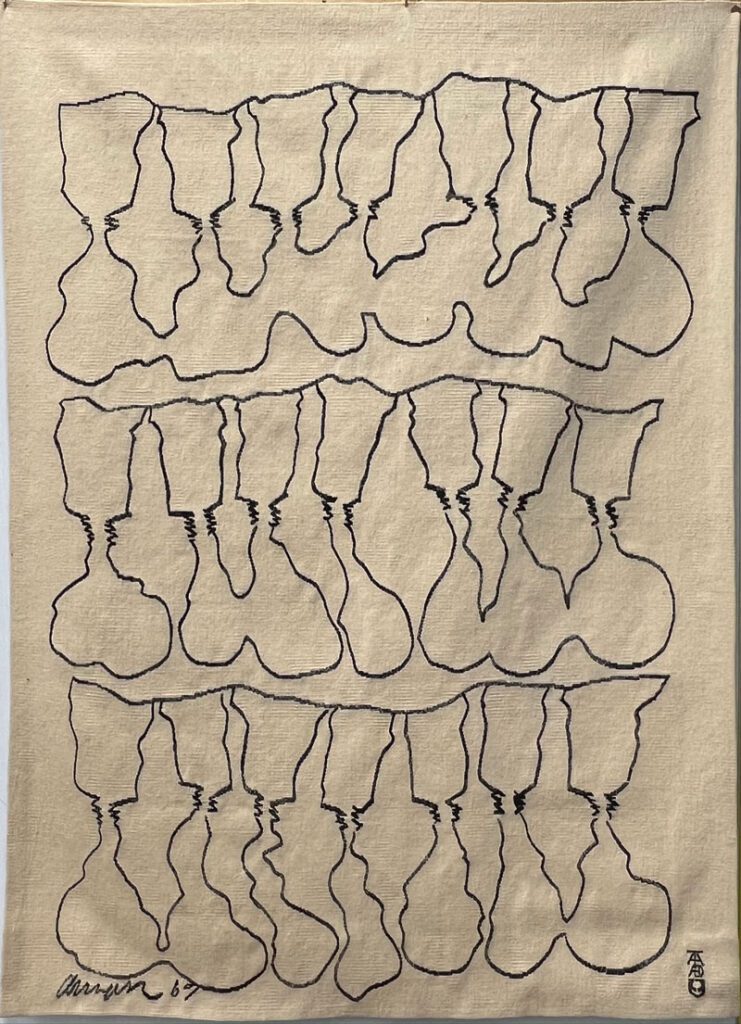“Coulures de Tubes”, Aubusson tapestry woven in the Tabard workshop.
With signed label, numbered 4/5
1969
Arman (1928-2005) was a French born American artist. Born Armand Fernandez in Nice, France, he showed a precocious talent for painting and drawing as a child. The son of an antiques dealer and amateur cellist, the artist absorbed an intense appreciation for music and the art of collecting. After studies at the Ecole Nationale des Arts Décoratifs in Nice, Arman studied art history at the Ecole du Louvre in Paris. Inspired by Vincent van Gogh, he signed his early work with his first name only; he retained a printer’s 1958 misspelling of his name for the rest of his career.
Arman was a painter who moved from using objects for the ink or paint traces they leave (cachets, allures d’objet) to using them as the artworks themselves. He is best known for his Accumulations and destruction/recomposition of objects.
Regarded as one of the most prolific and inventive creators of the late 20th century. His work, strongly influenced by Dada, and in turn a strong influence on Pop Art, is in the collections of such institutions as the Metropolitan Museum of Art, the Tate Gallery, and the Centre Pompidou. His work has sold for six figures at auction and belongs in the collections of the Museum
of Modern Art, the Hirshhorn Museum and Sculpture Garden, the Tate, the Stedelijk Museum, and the Tel Aviv Museum of Art, among other institutions.
Numerous artists have chosen contemporary tapestry as a means of expression. Arman, despite his huge catalog, invested little in the medium of tapestry. This is the only piece woven in the Tabard workshop on a motif which was often present in his work at the time: tubes of paint.
